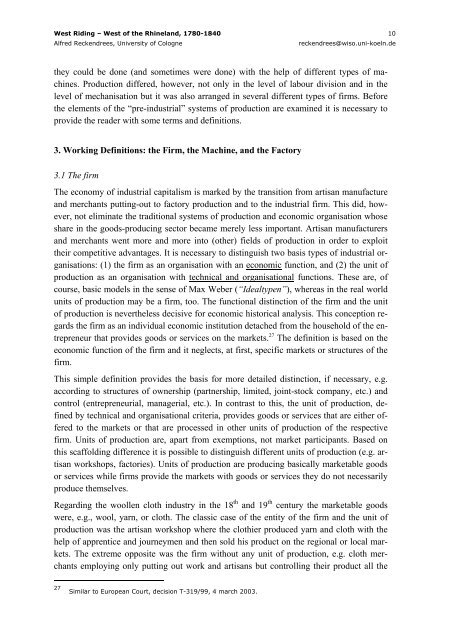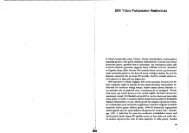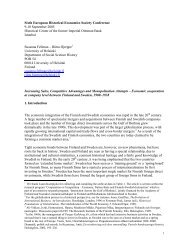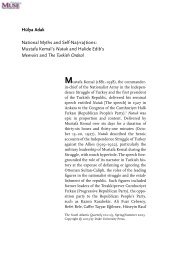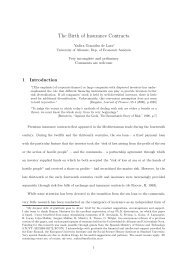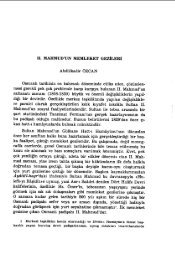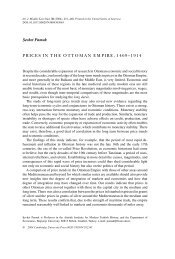West Riding – Western Rhineprovince, 1790-1840: Diverse Paths to ...
West Riding – Western Rhineprovince, 1790-1840: Diverse Paths to ...
West Riding – Western Rhineprovince, 1790-1840: Diverse Paths to ...
Create successful ePaper yourself
Turn your PDF publications into a flip-book with our unique Google optimized e-Paper software.
<strong>West</strong> <strong>Riding</strong> <strong>–</strong> <strong>West</strong> of the Rhineland, 1780-<strong>1840</strong> 10<br />
Alfred Reckendrees, University of Cologne reckendrees@wiso.uni-koeln.de<br />
they could be done (and sometimes were done) with the help of different types of machines.<br />
Production differed, however, not only in the level of labour division and in the<br />
level of mechanisation but it was also arranged in several different types of firms. Before<br />
the elements of the “pre-industrial” systems of production are examined it is necessary <strong>to</strong><br />
provide the reader with some terms and definitions.<br />
3. Working Definitions: the Firm, the Machine, and the Fac<strong>to</strong>ry<br />
3.1 The firm<br />
The economy of industrial capitalism is marked by the transition from artisan manufacture<br />
and merchants putting-out <strong>to</strong> fac<strong>to</strong>ry production and <strong>to</strong> the industrial firm. This did, however,<br />
not eliminate the traditional systems of production and economic organisation whose<br />
share in the goods-producing sec<strong>to</strong>r became merely less important. Artisan manufacturers<br />
and merchants went more and more in<strong>to</strong> (other) fields of production in order <strong>to</strong> exploit<br />
their competitive advantages. It is necessary <strong>to</strong> distinguish two basis types of industrial organisations:<br />
(1) the firm as an organisation with an economic function, and (2) the unit of<br />
production as an organisation with technical and organisational functions. These are, of<br />
course, basic models in the sense of Max Weber (“Idealtypen”), whereas in the real world<br />
units of production may be a firm, <strong>to</strong>o. The functional distinction of the firm and the unit<br />
of production is nevertheless decisive for economic his<strong>to</strong>rical analysis. This conception regards<br />
the firm as an individual economic institution detached from the household of the entrepreneur<br />
that provides goods or services on the markets. 27 The definition is based on the<br />
economic function of the firm and it neglects, at first, specific markets or structures of the<br />
firm.<br />
This simple definition provides the basis for more detailed distinction, if necessary, e.g.<br />
according <strong>to</strong> structures of ownership (partnership, limited, joint-s<strong>to</strong>ck company, etc.) and<br />
control (entrepreneurial, managerial, etc.). In contrast <strong>to</strong> this, the unit of production, defined<br />
by technical and organisational criteria, provides goods or services that are either offered<br />
<strong>to</strong> the markets or that are processed in other units of production of the respective<br />
firm. Units of production are, apart from exemptions, not market participants. Based on<br />
this scaffolding difference it is possible <strong>to</strong> distinguish different units of production (e.g. artisan<br />
workshops, fac<strong>to</strong>ries). Units of production are producing basically marketable goods<br />
or services while firms provide the markets with goods or services they do not necessarily<br />
produce themselves.<br />
Regarding the woollen cloth industry in the 18 th and 19 th century the marketable goods<br />
were, e.g., wool, yarn, or cloth. The classic case of the entity of the firm and the unit of<br />
production was the artisan workshop where the clothier produced yarn and cloth with the<br />
help of apprentice and journeymen and then sold his product on the regional or local markets.<br />
The extreme opposite was the firm without any unit of production, e.g. cloth merchants<br />
employing only putting out work and artisans but controlling their product all the<br />
27 Similar <strong>to</strong> European Court, decision T-319/99, 4 march 2003.


